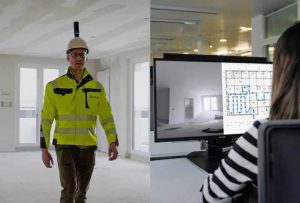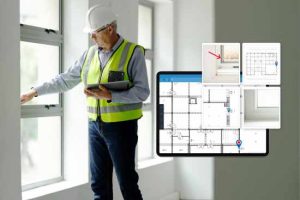Far too many buildings across Europe have “the box.” It’s stuffed with documentation about the construction process – everything from initial plans to final inspections. It might be in a basement, an office, or forgotten in some facility manager’s filing cabinet. And it represents everything that’s wrong with how the construction industry handles information.
“Construction is the least digitized industry. Even agriculture is more digitized,” explains PlanRadar’s regional manager Szilárd Simon. “What typically happens is that once you hand over the building from the construction site, whoever ends up doing the facility management has to rebuild the data from scratch.”
And that’s a real problem in the era of ESG compliance and the need for granular data. It’s crucial for asset owners building to be able to track the data their buildings are throwing off from the moment they get the keys.
PlanRadar has been working to eliminate these boxes for years, but old habits and processes die hard. The company’s basic approach is to enable the instantaneous sharing of the latest project plans and drawings to everyone involved – on a definable need to know basis. It also enables anyone from project managers, to inspectors or foreman to create tickets in those plans to notify of changes, or defects or areas of concern.
By archiving all projects changes and the huge variety of tickets produced over the course of construction, the developer is able to hand over a digital representation not just of the finished building, but of the process itself.
 Over the past year, the company has rolled out two major additions to its platform: a comprehensive pre-construction planning system and an innovative “SiteView” feature that uses 360-degree cameras for progress monitoring.
Over the past year, the company has rolled out two major additions to its platform: a comprehensive pre-construction planning system and an innovative “SiteView” feature that uses 360-degree cameras for progress monitoring.
The pre-construction system might sound like just another document management tool, but it’s actually solving one of development’s most persistent headaches: keeping everyone on the same page during the planning phase. Architects upload plans, stakeholders comment, revisions are tracked, and approvals are managed in a structured workflow that ensures nothing falls through the cracks.
Given the industry’s notorious resistance to change, Szilárd Simon says PlanRadar has teams on the ground to guide companies through digital transformation step by step. “We hold our partner’s hand,” he says. “We don’t let them lose.” It’s an approach that’s enabled the company to spread to 75 countries and iterate in 28 languages. But it also makes it crucial to make the complex software feel simple to use. “If we give them difficult software, they’ll just stick with Excel.”
Having been used by HB Reavis in the Varso Tower project and by developers like Passerinvest, there’s increasing evidence that even in CEE, the industry’s digital resistance might finally be cracking. And it couldn’t come at a better time. With ESG requirements becoming more stringent and new government legislation on the horizon, the need for comprehensive building data is growing. Forward-thinking developers are already bringing facility management companies into projects earlier, recognizing that the data collected during construction will be crucial for future operations.
Looking ahead, PlanRadar is betting big on AI. They’ve already rolled out an AI chatbot for customer support, but they see much bigger possibilities on the horizon. Their SiteView feature, for instance, could eventually use machine learning to automatically track construction progress.
The contrast between Eastern and Western European markets offers an interesting subplot to Plan Radar’s expansion. While Western Europe may have taken the lead in construction digitization, Central and Eastern European markets are rapidly catching up, driven by international investment and standardized project management approaches.
The high-minded goal may be to get rid of those blueprint-filled boxes, but Simon says the important thing is to keep looking for day-to-day solutions to problems. “We’re not saying we can change the world. We just want to show you ways you can be more efficient.”
Also in ThePrime
What role for developers in solving the affordability question?
PPP’s Czech future depends on D4, says Wilhelm (White & Case)






